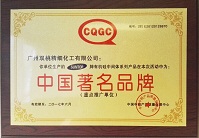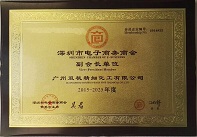
![]() E-mail: admin@gz-chemical.com
E-mail: admin@gz-chemical.com
Email us,best price and silane solutions for you!
Tel:+86 (20) 29035969

![]() E-mail: admin@gz-chemical.com
E-mail: admin@gz-chemical.com
Email us,best price and silane solutions for you!
Tel:+86 (20) 29035969


Exploring an area overlooked by other scientists, physicists at the Florida State University-
headquartered National High Magnetic Field Laboratory have discovered that a class of
materials called "1-2-20s" have very promising thermoelectric properties, opening the
floodgates for further research into these fascinating materials.
The study was published in Science Advances.
Thermoelectric devices can produce electricity if there is a temperature difference between
the two ends. They can also do the opposite: use electricity to absorb or release heat. This
property has many potential applications, from compressor-free refrigeration to power
generation in space to recouping all the energy wasted by car engines (about 40 percent) that
escapes through heat.
"It's not free energy," said MagLab physicist Ryan Baumbach, corresponding author on the
paper, "but it's the next best thing."
Most materials have very little thermoelectric effect. That's because the transfer of electricity
across a material and the transfer of heat usually go hand in hand. In general, nature wants to
keep heat and electrical conductivity linked, but to have good thermoelectric performance,
these two properties need to be decoupled.
About two years ago, Baumbach suggested that Kaya Wei, the MagLab's Jack Crow
postdoctoral fellow and a member of Baumbach's research group, study a "1-2-20" material
that seemed like a good candidate for thermoelectricity.
The specific material Baumbach proposed featured three basic ingredients in a "1-2-20" ratio:
the element ytterbium; a transition metal (either cobalt, rhodium or iridium); and the element
zinc. Baumbach had a hunch this compound had what it takes, if manipulated properly in his
lab, to thumb its nose at nature and unlink thermal conductivity from heat conductivity.
Using high-temperature furnaces in Baumbach's lab, Wei synthesized the compound in crystal
form and subjected the samples to a gauntlet of measurements. The results confirmed that, at
low temperatures, the material was in fact a promising thermoelectric material.
Guangzhou Double Peach Fine Chemical Co.,Ltd
Address: No 3401 Huangpu East Road, Huangpu District, Guangzhou, China
Tel:+86 (20) 29035969 Fax:+86(20)29035979
Tel/Wechat/Whatsapp:0086 13826126978 admin@gz-chemical.com